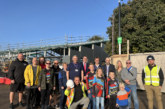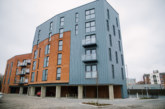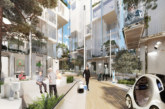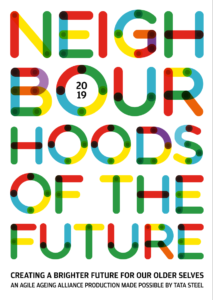 This month LABM looks at Neighbourhoods of the Future 2019, Creating a brighter future for our older selves. This report asks the questions: In an ideal world, what could our homes and neighbourhoods look like in 10 to 20 years’ time? What should we be doing now to disrupt the status quo and make this vision a reality
This month LABM looks at Neighbourhoods of the Future 2019, Creating a brighter future for our older selves. This report asks the questions: In an ideal world, what could our homes and neighbourhoods look like in 10 to 20 years’ time? What should we be doing now to disrupt the status quo and make this vision a reality
INTRODUCTION
Ian Spero, Founder, Agile Ageing Alliance (AAA), states: “How many of us will get to enjoy the luxury of growing old in the comfort of our own home, when the majority of UK housing stock is not fit for purpose?”
Neighbourhoods of the Future 2019, Creating a brighter future for older ourselves seeks to challenge the status quo by asking stakeholders in this complex area what in an ideal world homes and neighbourhoods, could look like in 190 to 20 years’ time, and what steps must be taken now to make their vision a reality. Their ideas are laid out with creative flair but without losing sight of the ‘real world’ challenges specific to their respective disciplines. The articles have been grouped under six headings:
• Housing
• Design
• Health & Care
• Technology
• Finance
• Ageing Societies
HOUSING
The whitepaper states that: ‘Fundamentally we still build homes the way we did hundreds of years ago. Whilst technology corporations, telecommunication companies, the automotive and aerospace industries are advancing at incredible rates, the house building industry is stagnant and it’s genuinely time for systematic change.’
Answering this call for change the whitepaper addresses the challenge through the eyes of different types of housebuilder. From Community Land Trusts to the largest international developers such as the Grosvenor Group, which is committed to encouraging relevant stakeholders to work together in recognising the issue pertaining to age-friendly cities.
The 18 articles in the section of the report looking at housing include: Homes for later life, The next generation of housing is rolling off the line and Community Land Trusts – More power to the people.
LABM briefly focuses on the article, Homes for our future selves – A view from the front line authored by Sue Coles, university of the 3rd Age (U3A) and Sam Mauger, Chief Executive, The Third Age Trust. An account is given of their attendance at the Neighbourhoods of the Future conference, here a striking point far from the image sometimes portrayed in the media as ‘a problem’, rarely focusing on what they can contribute. This so called ‘deficit model’ focuses exclusively on the negative aspects of ageing. Speakers at the conference painted a future where: ‘Older people are not just the beneficiaries of neighbourhoods of the future, they also have a key role to play in their creation. Our desire to participate does not decrease with age.’ What was wanted was a future where there are opportunities, not just for better housing, but for living longer, healthier, independent and more fulfilling. Some of the key ‘takeaways’ from the conference were:
• Older people are a real market opportunity.
• Product design needs to be inclusive.
• Older adults want to engage in a conversation about the future.
DESIGN
Contributors to this section say it’s time for designers to flex their creative muscles Paul Priestman points out that mobility is at the heart of extending our healthy lives. Paul’s article explores ways we can rethink transport to improve individual experience. Complementing this, Sebastian Conran believes that soon it will be social/companion robots that will share our personal space, interact with us and with each other, to provide emotional engagement and entertainment.
Let’s design for ability, an article authored by Marta Hernandez, reminds that equal attention should be paid to the urban environments in the home. Marta says, “Urban developers need to provide solutions that are cost-effective and consider universal design (design that is accessible to all) applied to public spaces, transport, buildings, as well as products.” Regarding designing technology for independence for the older generation she says: “Technology should not be used to define new behaviours. Technology must respond to existing needs and must seamlessly support the human side of care and services.”
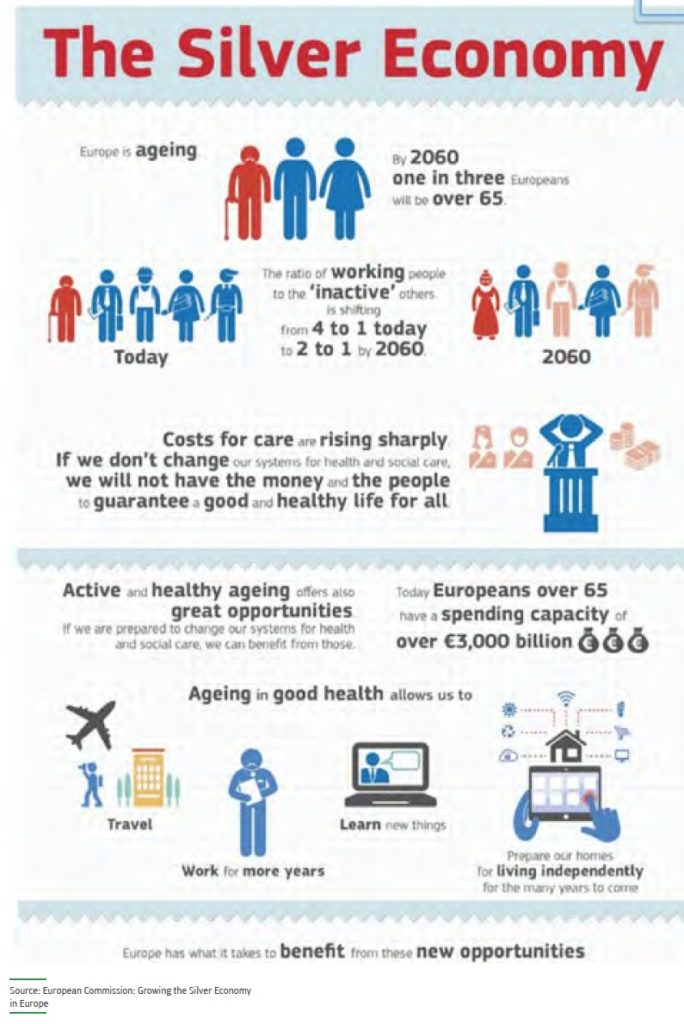 HEALTH & CARE
HEALTH & CARE
Martin Green, CEO of Care England, predicts the next few years will be remembered as a period of ‘seismic change’, akin to that of the Industrial Revolution, and will redefine what it means to be human in the 21st century. These themes are explored in his article: Working smarter, not harder.
Other articles in the Heath & Care section include:
• The blueprint for new public health.
• Smart homes for health and wellbeing.
• Reducing NHS demand with digitally-enabled prevention.
TECHNOLOGY
Wendy Tindale, CEO of NHS England Test Bed, Devices for Dignity, says that technology has the capacity to create efficiencies in the delivery of care, early diagnosis and personalisation of treatments, and transform the ability of individuals to participate actively in their own care and management of long-term conditions. Wendy looks at the future technology and the NHS in her article: Technology for health and wellbeing – an NHS perspective.
While there is no doubt that technology can serve as a force for good, the report points out that we cannot afford to ignore the potential dangers. To this end included in the Technology section are the articles: We can’t allow technology to disrupt our and ethical framework; Finding the balance between security and technological advancement, and Smart technology must be interoperable.
FINANCE
The report points out that although in some developed countries ageing populations constitute a significant threat to government spending, workforce strategies, and social support strategies over the next 30years there is a need to be objective and to adopt unorthodox thinking and strategies.
Articles included under the theme of Finance include:
• Unlocking the potential of the silver economy.
• How to spot build and pitch solutions for an ageing society.
• Six disruptive business models to power our neighbourhoods of the future.
AGEING SOCIETIES
The final section of Neighbourhoods of the Future 2019 focuses on two articles: Living with millennials authored by Marjeke Sjerps of Creative Quills, looks at destigmatising the very idea or care; of community; of intergenerational living. The second article, A Future Without Ageism Richard Norman, Lead, Age Allies Programme, Age UK London, points out that there is a need to address negative attitudes to ageing and their consequences will require action at all ages.
CONCLUSION
Neighbourhoods of the Future 2019 – Creating a brighter future for our older selves (An Agile Ageing Alliance production made possible by Tata Steel) features informative, challenging and provocative views, ideas and opportunities for creating a better future for population shifts yet to come.
Contributions and ideas on how this ‘call to arms’ can go forward is welcomed. For your copy of Neighbourhoods of the Future 2019 – Creating a brighter future for our older selves and to join the ‘revolution’ visit: www.agileageing.org
As Ian Spero, Founder, Agile Ageing Alliance , says “The best way too predict the future is to create it. Let’s get to work…”


